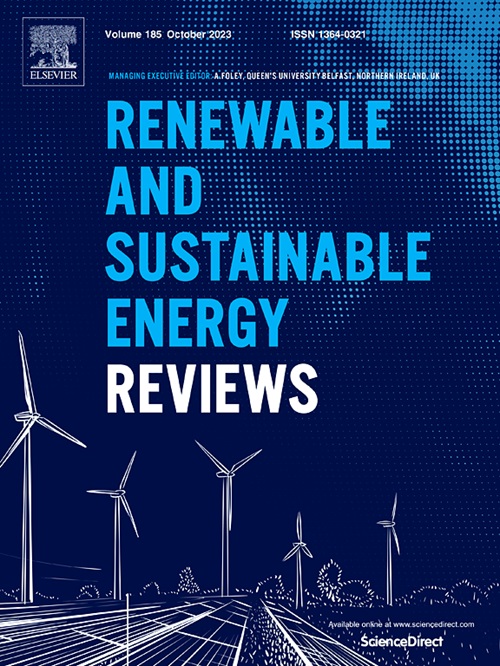Exploring the role of fracture networks in enhanced geothermal systems: Insights from integrated thermal-hydraulic-mechanical-chemical and wellbore dynamics simulations
IF 16.3
1区 工程技术
Q1 ENERGY & FUELS
引用次数: 0
Abstract
Hot dry rock (HDR) fracturing is a critical stage in the development of enhanced geothermal systems (EGS), and the pattern of an engineered fracture network plays a crucial role in cumulative heat recovery. However, current studies often lack completeness and accuracy when exploring the effects of various fracture networks, overlooking key factors such as chemical reactions, wellbore dynamics, and/or rock mechanical behaviors. This study develops combined thermal-hydraulic-mechanical-chemical (THMC) and wellbore heat loss models, for the first time, to evaluate EGS heat recovery under different vertical-fracture and shear-fracture networks. The results reveal an over 3.9 % variance in heat recovery between THMC and other coupled models, while wellbore heat loss accounts for approximately 7.7 % of the thermal power production, underscoring the significance of incorporating both complex reservoir mechanisms and wellbore heat loss in EGS assessments. In addition, heat recovery improves with increased fracture spacing and number but decreased conductivity. Among vertical-fracture networks, an interrupted complex vertical-fracture system achieves the highest electricity generation of 1119.0 GWh over 20 years of operation. Meanwhile, shear-fracture networks often perform better in heat extraction than vertical-fracture systems, with the case featuring more shear fractures and higher permeability showing the highest electricity output of 1136.7 GWh. Importantly, increasing a fracture number contributes an additional 20.2 GWh, compared to only a 2.2 GWh gain from higher permeability, highlighting the fracture number as the dominant factor in shear-fracture systems. However, due to the higher injection pressure requirements, shear fracturing is best suited for reservoirs with abundant natural fractures. Otherwise, an interrupted complex fracture system is the preferred alternative. This study significantly improves the understanding of EGS performance across different fracture patterns, offering valuable insights to operators for improved decision-making in EGS development.
求助全文
约1分钟内获得全文
求助全文
来源期刊

Renewable and Sustainable Energy Reviews
工程技术-能源与燃料
CiteScore
31.20
自引率
5.70%
发文量
1055
审稿时长
62 days
期刊介绍:
The mission of Renewable and Sustainable Energy Reviews is to disseminate the most compelling and pertinent critical insights in renewable and sustainable energy, fostering collaboration among the research community, private sector, and policy and decision makers. The journal aims to exchange challenges, solutions, innovative concepts, and technologies, contributing to sustainable development, the transition to a low-carbon future, and the attainment of emissions targets outlined by the United Nations Framework Convention on Climate Change.
Renewable and Sustainable Energy Reviews publishes a diverse range of content, including review papers, original research, case studies, and analyses of new technologies, all featuring a substantial review component such as critique, comparison, or analysis. Introducing a distinctive paper type, Expert Insights, the journal presents commissioned mini-reviews authored by field leaders, addressing topics of significant interest. Case studies undergo consideration only if they showcase the work's applicability to other regions or contribute valuable insights to the broader field of renewable and sustainable energy. Notably, a bibliographic or literature review lacking critical analysis is deemed unsuitable for publication.
 求助内容:
求助内容: 应助结果提醒方式:
应助结果提醒方式:


